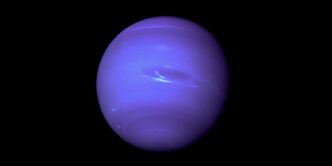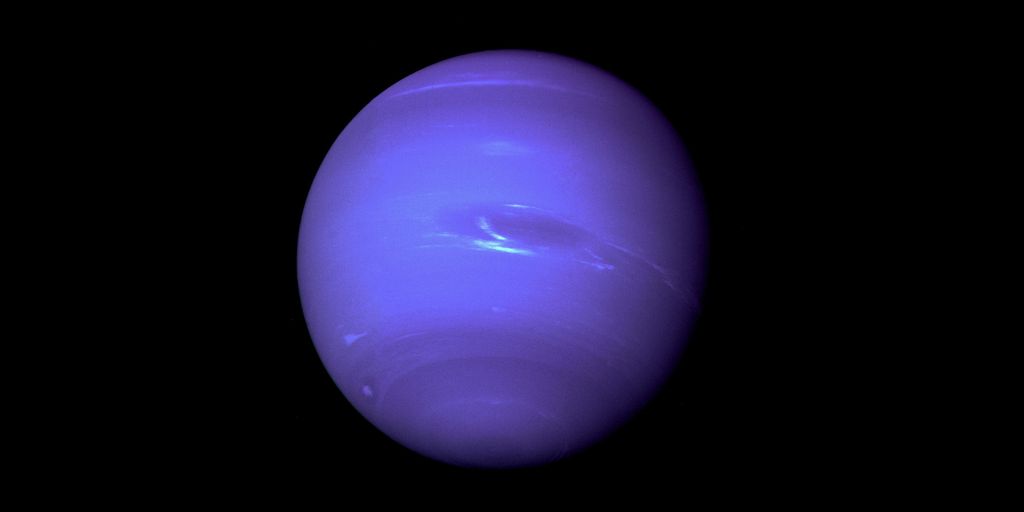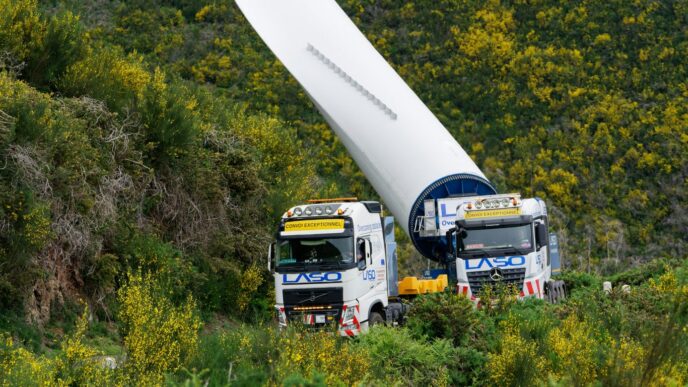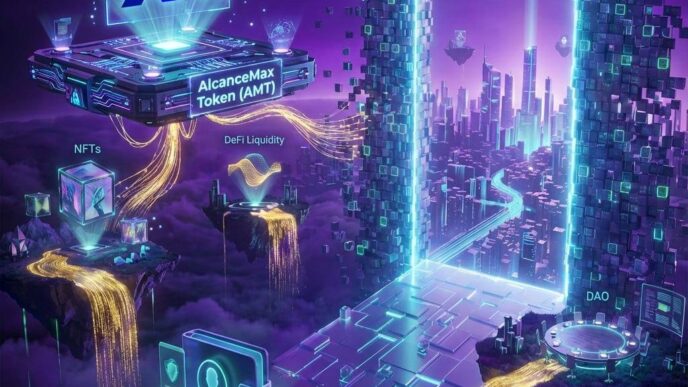Hey everyone! Today, we’re taking a quick trip to the outer reaches of our solar system to chat about Neptune. This big, blue planet is super interesting, and it’s got some unique features that make it stand out. So, let’s jump right in and uncover 10 interesting facts about planet Neptune, the distant ice giant.
Key Takeaways
- Neptune is an ice giant, meaning it’s mostly made of a thick mix of water, methane, and ammonia, rather than being solid.
- Its atmosphere is made of hydrogen, helium, and methane, which gives it that distinct blue color.
- Neptune experiences some of the fastest winds in the solar system, with storms like the Great Dark Spot appearing and disappearing.
- It has 14 known moons, with Triton being the largest and most unusual, orbiting in the opposite direction of Neptune’s spin.
- Triton’s surface shows signs of active geysers, suggesting it might have been captured by Neptune’s gravity rather than forming with the planet.
1. Ice Giant
So, Neptune is an ice giant. What does that even mean? Well, unlike the rocky planets like Earth or the gas giants like Jupiter, Neptune is mostly made up of a dense, hot soup of icy materials – water, methane, and ammonia. Scientists call these "ices," even though they’re super hot and dense inside the planet. It’s wild to think about!
- Neptune’s core is rocky, which is pretty standard for planets.
- The mantle surrounding the core is where all those "ices" hang out.
- The blue color we see is due to methane in Neptune’s atmosphere.
It’s kind of like a giant, slushy snowball, but, you know, way more extreme. The methane in the atmosphere absorbs red light and reflects blue light, giving Neptune its distinctive color. It’s a pretty cool AI application of atmospheric science, if you ask me.
2. Atmosphere
Neptune’s atmosphere is a wild place, and it’s way more complex than you might think. It’s not just a simple layer of gas; it’s dynamic, turbulent, and full of surprises. Think of it like Earth’s atmosphere, but on steroids and with a whole lot more mystery.
One of the most interesting things about Neptune’s atmosphere is its composition. It’s primarily made up of hydrogen and helium, similar to Jupiter and Saturn. But what sets Neptune apart is the presence of methane. This methane absorbs red light, which is why Neptune appears such a vibrant blue color. It’s like the planet is wearing a giant blue filter!
But the atmosphere isn’t just about pretty colors. It’s also incredibly active. Neptune has some of the fastest winds in the solar system, reaching speeds of over 1,200 miles per hour. That’s faster than the speed of sound! These winds are driven by the planet’s internal heat, which is still a bit of a puzzle to scientists. Neptune radiates more heat than it receives from the sun, suggesting there’s some kind of internal energy source at play. It’s like the planet has its own little furnace inside.
Another cool thing about Neptune’s atmosphere is its layered structure. It has distinct cloud layers, similar to Earth, but made of different substances. The upper clouds are thought to be made of methane ice, while the lower clouds are likely composed of hydrogen sulfide ice. Imagine clouds made of stinky rotten eggs! It’s a pretty wild thought. Understanding the atmospheric composition is key to unlocking Neptune’s secrets.
- Upper clouds made of methane ice.
- Lower clouds likely composed of hydrogen sulfide ice.
- Fastest winds in the solar system, reaching speeds of over 1,200 miles per hour.
3. Storms

Okay, so Neptune’s got some serious weather going on. I mean, we’re talking about storms that could swallow Earth whole. It’s pretty wild to think about. The winds there are insane, like, up to 1,200 mph! That’s way faster than any hurricane we’ve ever seen.
Back in ’89, when Voyager 2 swung by, it spotted this massive storm called the Great Dark Spot. It was HUGE. Bigger than Earth, no joke. But get this, a few years later, it was just…gone. Poof! Disappeared. Then, another big storm popped up. It’s like Neptune’s always brewing something up. It’s interesting to see how Neptune has a large dark spot and a smaller bright spot.
And get this, there was also this bright cloud feature near the Great Dark Spot called the Scooter. It zipped around Neptune super fast, even faster than the Great Dark Spot itself. Then there was Dark Spot 2, a smaller storm hanging out south of the Scooter. Neptune’s weather is just so dynamic and ever-changing. It makes our weather look boring, haha.
Here’s a quick rundown:
- Winds can reach 1,200 mph.
- The Great Dark Spot was once bigger than Earth.
- Storms disappear and reappear.
- The Scooter is a fast-moving cloud feature.
4. Moons
Okay, so Neptune has a bunch of moons. As of today, July 9th, 2025, we know about 14 of them. It’s kinda cool because they’re all named after Greek and Roman sea gods and nymphs. I always thought that was a nice touch, makes it feel a bit more connected to mythology, you know? It’s not just some random number or scientific designation.
Triton
Let’s talk about Triton, because it’s the big cheese when it comes to Neptune’s moons. It’s by far the largest, and it’s got some seriously weird stuff going on. First off, it orbits Neptune in the opposite direction of all the other moons. Scientists call that a retrograde orbit. That makes them think Triton might not have formed with Neptune, but was captured later on. Imagine just drifting through space and getting caught in Neptune’s gravity – wild, right?
- Triton is super cold. Like, -391 degrees Fahrenheit cold. I can’t even imagine.
- It has active geysers that spew nitrogen gas. Space volcanoes! How awesome is that?
- Its surface is relatively young, geologically speaking. This suggests that something resurfaced it at some point, erasing older craters and features. Maybe some kind of cryovolcanism? Who knows!
It’s just a fascinating moon, and scientists are really interested in learning more about it. Maybe one day we’ll send another probe out there to take a closer look. That would be amazing. It’s possible that Triton formed elsewhere and was captured by Neptune’s gravity.
Other Moons
While Triton gets all the attention, Neptune’s other moons are interesting in their own right. They’re much smaller and less well-studied, but they still add to the overall mystery of the Neptunian system. Here’s a quick rundown:
- Nereid: Has a highly eccentric orbit, meaning it’s path around Neptune is very elongated. It takes years to complete one orbit.
- Proteus: Is irregularly shaped and heavily cratered. It’s one of the largest irregularly shaped objects in our solar system.
- Larissa, Galatea, Despina, Thalassa, Naiad, Halimede, Sao, Laomedeia, Psamathe, and Neso: These are all smaller, inner moons that orbit closer to Neptune. They’re thought to be fragments of larger moons that were broken apart by impacts. Scientists continue to discover more about Neptune’s moons all the time.
5. Triton
Okay, so Neptune has a bunch of moons, but Triton is the one that really stands out. It’s just… weird. I mean, most moons are pretty standard, right? They orbit in the same direction as their planet rotates. Not Triton.
Triton goes the opposite way, which scientists call a retrograde orbit. It’s like it’s deliberately trying to be different. And that’s not even the weirdest part.
- It’s super cold. Like, -391 degrees Fahrenheit cold. I can’t even imagine.
- It has active geysers that spew nitrogen gas. Geysers! On a moon! That’s wild.
- Its surface looks pretty young, which suggests it’s been resurfaced relatively recently. Maybe some kind of crazy volcanic activity?
All these things together make scientists think that Triton might not have actually formed around Neptune. The theory is that it was captured by Neptune’s gravity at some point, maybe after wandering in from the Kuiper Belt. It’s like Neptune just snatched it up and said, "You’re mine now!"
It’s a pretty cool idea, and it would explain why Triton is such an oddball compared to Neptune’s other moons. I hope we can send another probe out there someday to get a closer look. I bet there are even more secrets hiding on that icy surface.
Conclusion
So, there you have it. Neptune, way out there at the edge of our solar system, is a pretty amazing place. It’s got those wild winds, crazy storms, and a bunch of moons, with Triton being super weird. Even though it’s so far away and super cold, it’s still a planet that keeps scientists guessing. Every new bit of information we get just shows how much more there is to learn about this icy giant. It really makes you think about all the other cool stuff out there we haven’t even seen yet.
Frequently Asked Questions
Why is Neptune called an ‘ice giant’?
Neptune is called an “ice giant” because it’s mostly made of a thick, slushy mix of water, methane, and ammonia, which scientists refer to as “ices.” Unlike gas giants like Jupiter, it has a more substantial icy core and mantle.
What gives Neptune its blue color?
Neptune’s beautiful blue color comes from the methane gas in its atmosphere. Methane absorbs red light and reflects blue light, making the planet appear blue to our eyes.
How fast are the winds on Neptune?
Neptune has the fastest winds in our solar system, reaching speeds of up to 1,200 miles per hour (2,000 km/h). These incredibly strong winds create enormous storms, like the famous Great Dark Spot.
Does Neptune have any moons?
Yes, Neptune has 14 known moons. The largest and most interesting one is Triton.
What makes Neptune’s moon Triton so unique?
Triton is special because it orbits Neptune in the opposite direction of Neptune’s rotation, which is unusual for a moon. It also has active geysers that shoot out nitrogen gas, and its surface looks surprisingly young, suggesting some kind of recent activity.
Where did Triton come from?
Scientists believe Triton might have formed in a distant region of space called the Kuiper Belt and was later captured by Neptune’s strong gravity, rather than forming alongside Neptune like most moons.














